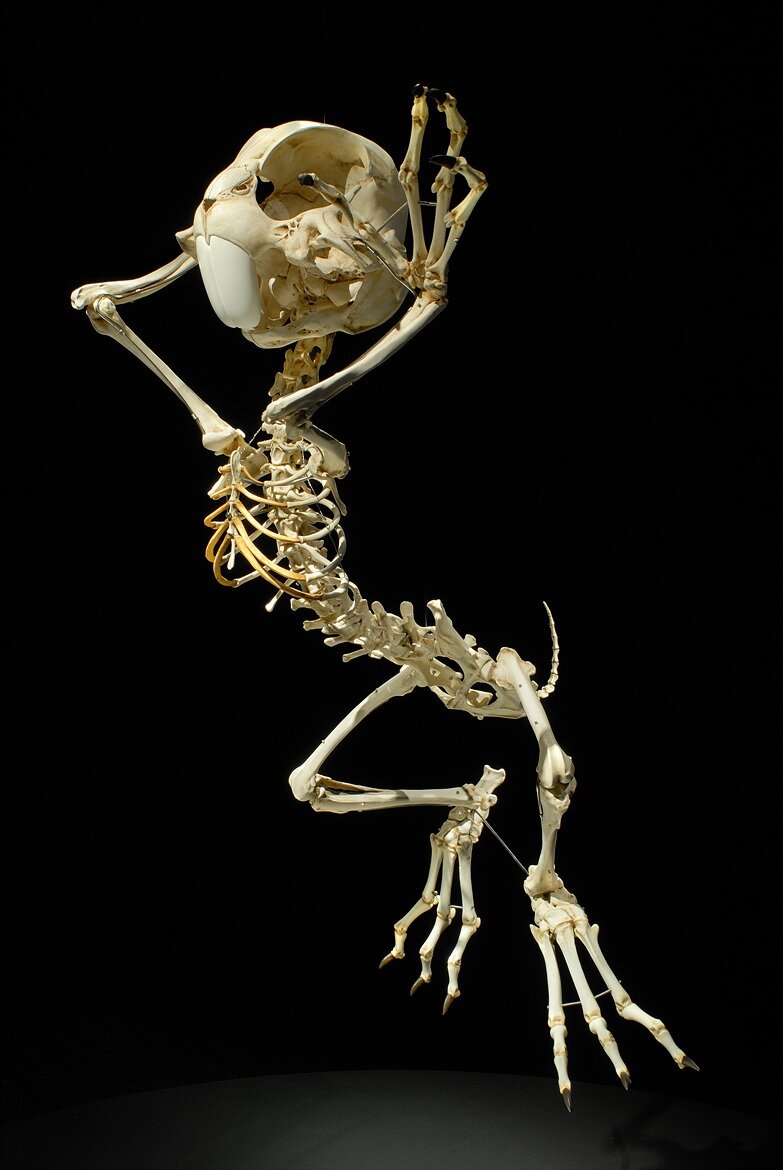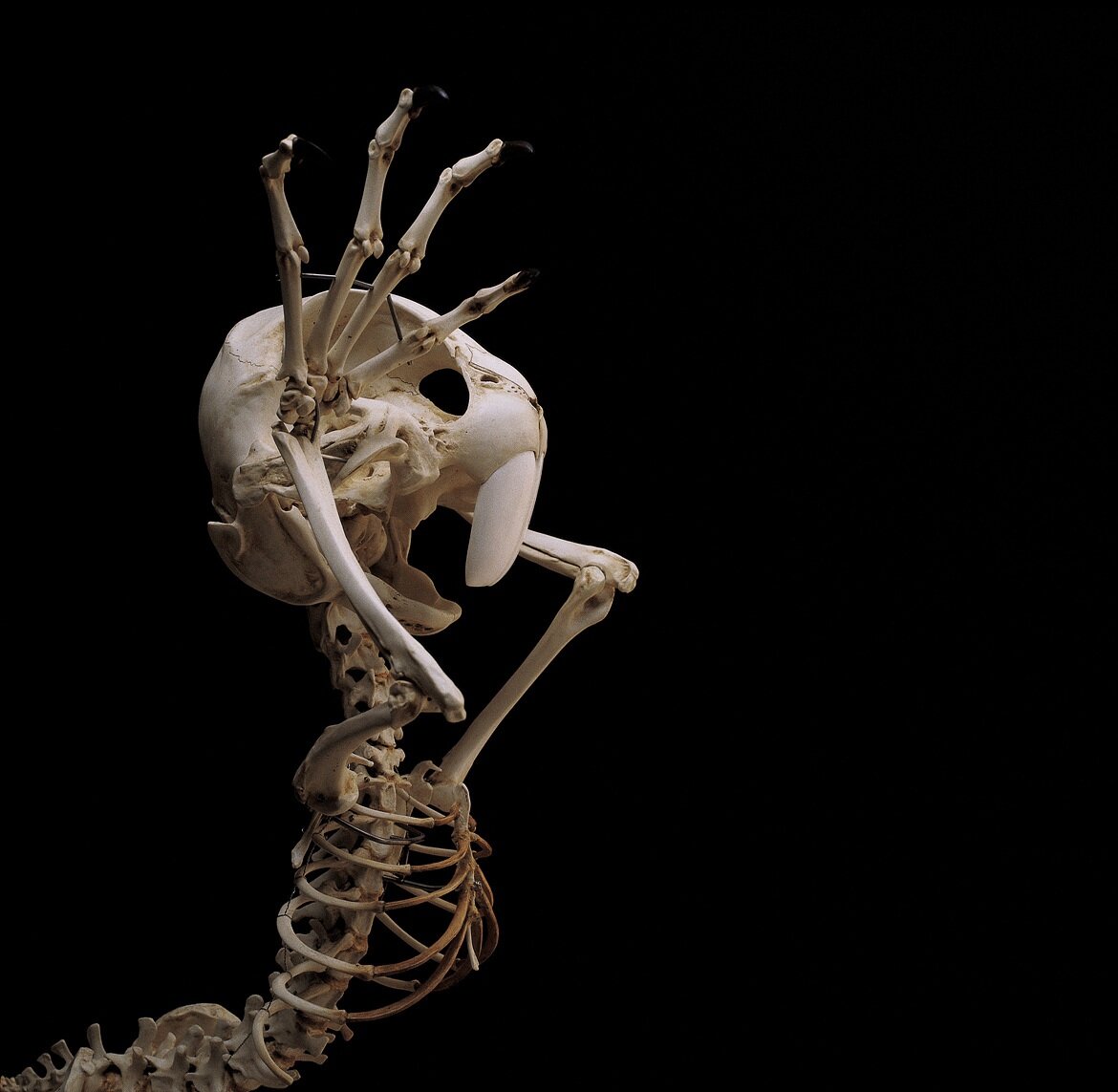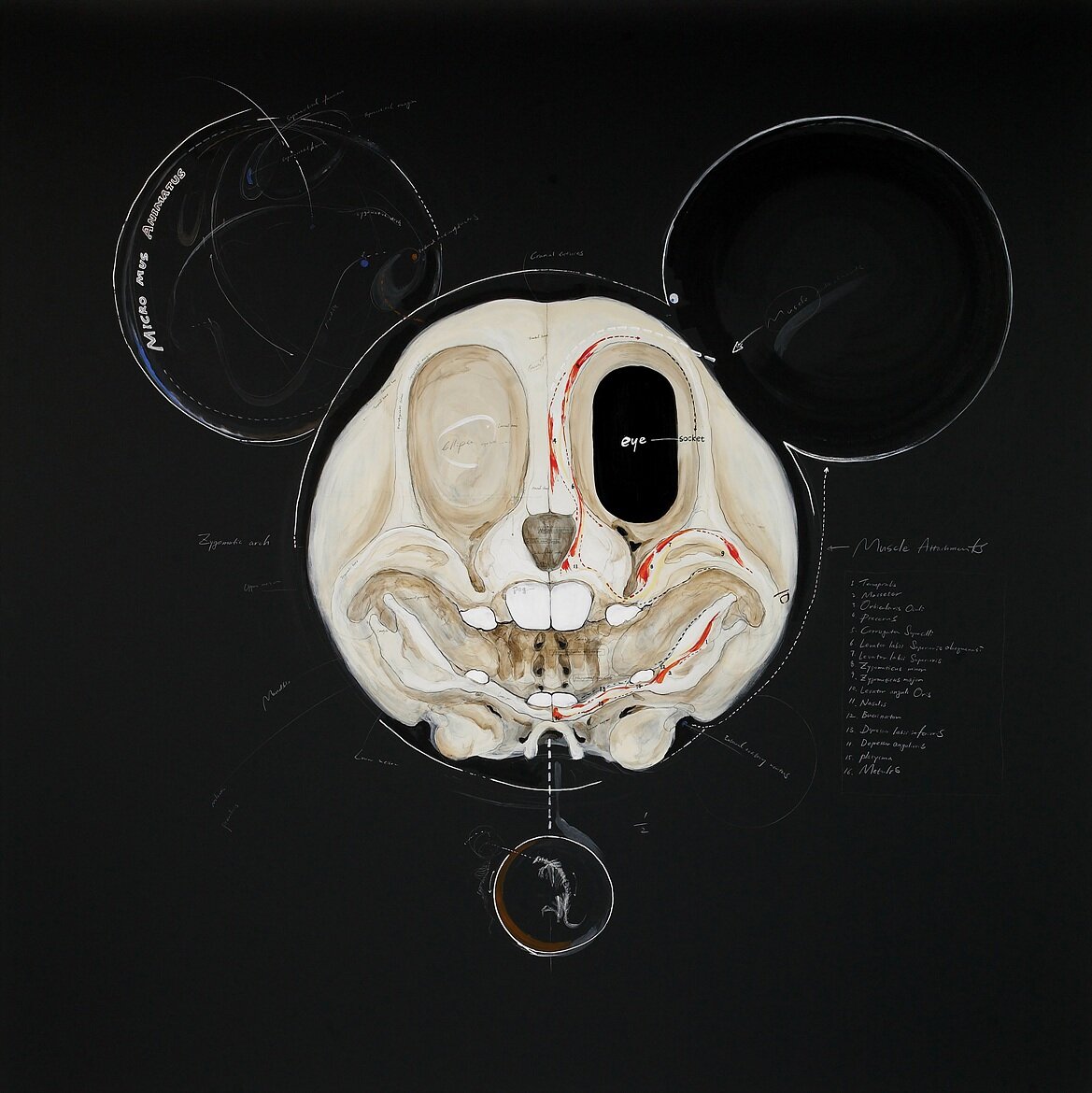Anatomical Studies of Cartoon Characters

 Have you ever wondered how Stewie from Family Guy can possibly support his gigantic head, or how Betty Boop is able to walk on those absurdly small feet? I haven't, because cartoons are meant to over exaggerate the features of humans and animals or whatever other type of life forms we can possibly imagine. But after seeing the work of Korean artist Hyungkoo Lee, I have re-evaluated the way I look at cartoon characters.
Have you ever wondered how Stewie from Family Guy can possibly support his gigantic head, or how Betty Boop is able to walk on those absurdly small feet? I haven't, because cartoons are meant to over exaggerate the features of humans and animals or whatever other type of life forms we can possibly imagine. But after seeing the work of Korean artist Hyungkoo Lee, I have re-evaluated the way I look at cartoon characters.
 Lee's collection entitled "The Animatus'" features skeletal models of popular cartoon characters from the past, such as Bugs Bunny, Road Runner, Tom and Jerry, and Donald Duck. He even gives each cartoon character a genus and species name, like Lepus animatus for Bugs Bunny and Anas animatus for Donald Duck. It's fantastic and a little weird. He' taking characters from the imaginary world and transforming them into reality. I'm really curious to see how children would react to these images and models.Lee's team works in a laboratory-like environment complete with white lab coats, work tools, and bones lying about. He carefully analyzes each cartoon character and like a paleontologist, reconstructs the skeleton. He uses the anatomy of real animals as a base to work from. The result is a realistic interpretation of the cartoon character's anatomy.Lee says of his work, "For some people, it may be a grotesque or spooky image, but for me it looks beautiful."What do you think?
Lee's collection entitled "The Animatus'" features skeletal models of popular cartoon characters from the past, such as Bugs Bunny, Road Runner, Tom and Jerry, and Donald Duck. He even gives each cartoon character a genus and species name, like Lepus animatus for Bugs Bunny and Anas animatus for Donald Duck. It's fantastic and a little weird. He' taking characters from the imaginary world and transforming them into reality. I'm really curious to see how children would react to these images and models.Lee's team works in a laboratory-like environment complete with white lab coats, work tools, and bones lying about. He carefully analyzes each cartoon character and like a paleontologist, reconstructs the skeleton. He uses the anatomy of real animals as a base to work from. The result is a realistic interpretation of the cartoon character's anatomy.Lee says of his work, "For some people, it may be a grotesque or spooky image, but for me it looks beautiful."What do you think?
